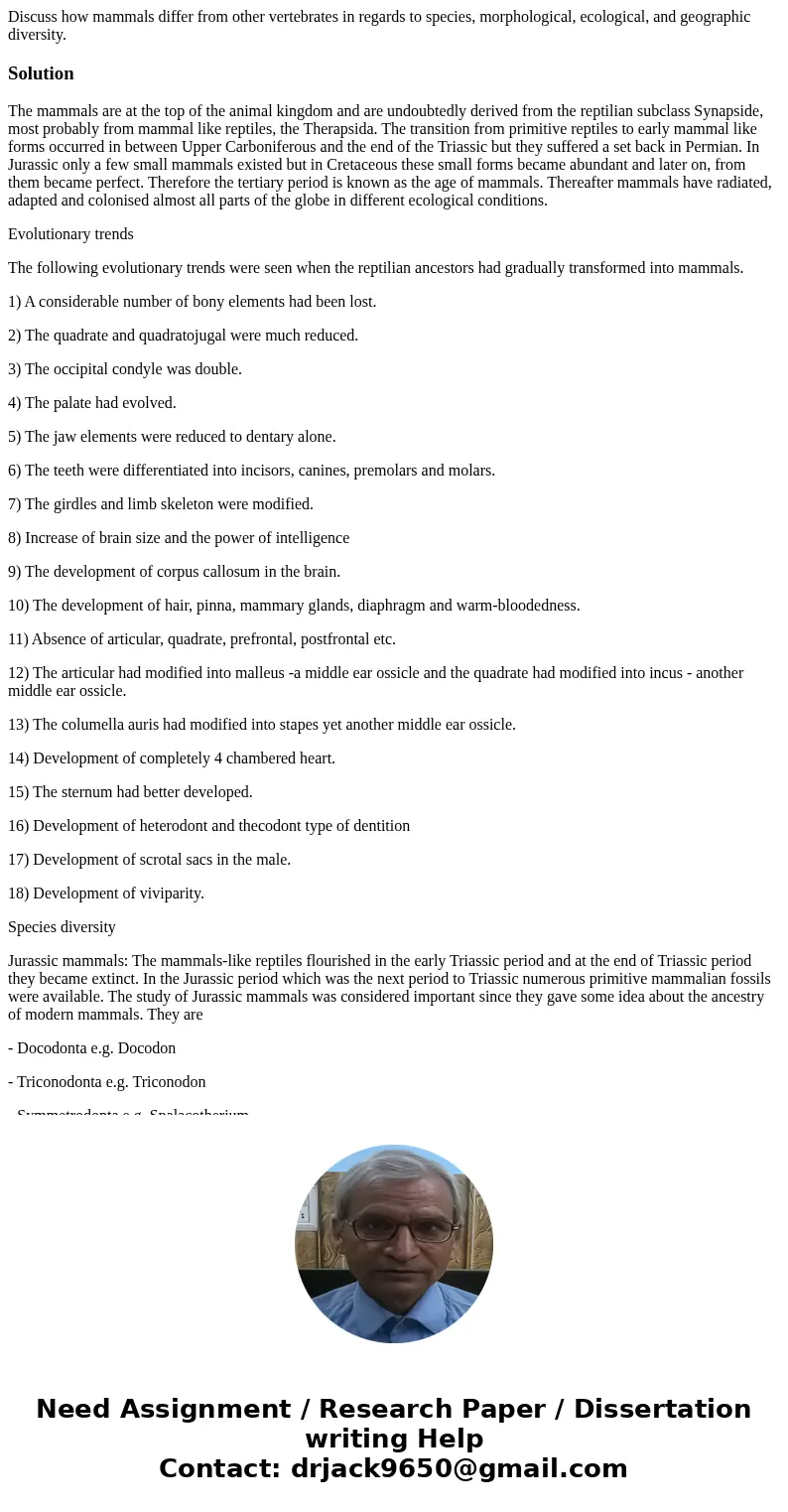Discuss how mammals differ from other vertebrates in regards
Discuss how mammals differ from other vertebrates in regards to species, morphological, ecological, and geographic diversity.
Solution
The mammals are at the top of the animal kingdom and are undoubtedly derived from the reptilian subclass Synapside, most probably from mammal like reptiles, the Therapsida. The transition from primitive reptiles to early mammal like forms occurred in between Upper Carboniferous and the end of the Triassic but they suffered a set back in Permian. In Jurassic only a few small mammals existed but in Cretaceous these small forms became abundant and later on, from them became perfect. Therefore the tertiary period is known as the age of mammals. Thereafter mammals have radiated, adapted and colonised almost all parts of the globe in different ecological conditions.
Evolutionary trends
The following evolutionary trends were seen when the reptilian ancestors had gradually transformed into mammals.
1) A considerable number of bony elements had been lost.
2) The quadrate and quadratojugal were much reduced.
3) The occipital condyle was double.
4) The palate had evolved.
5) The jaw elements were reduced to dentary alone.
6) The teeth were differentiated into incisors, canines, premolars and molars.
7) The girdles and limb skeleton were modified.
8) Increase of brain size and the power of intelligence
9) The development of corpus callosum in the brain.
10) The development of hair, pinna, mammary glands, diaphragm and warm-bloodedness.
11) Absence of articular, quadrate, prefrontal, postfrontal etc.
12) The articular had modified into malleus -a middle ear ossicle and the quadrate had modified into incus - another middle ear ossicle.
13) The columella auris had modified into stapes yet another middle ear ossicle.
14) Development of completely 4 chambered heart.
15) The sternum had better developed.
16) Development of heterodont and thecodont type of dentition
17) Development of scrotal sacs in the male.
18) Development of viviparity.
Species diversity
Jurassic mammals: The mammals-like reptiles flourished in the early Triassic period and at the end of Triassic period they became extinct. In the Jurassic period which was the next period to Triassic numerous primitive mammalian fossils were available. The study of Jurassic mammals was considered important since they gave some idea about the ancestry of modern mammals. They are
- Docodonta e.g. Docodon
- Triconodonta e.g. Triconodon
- Symmetrodonta e.g. Spalacotherium
- Pantotheria e.g. Melanodon
- Multituberculata e.g. Clenaclodon
Living groups of mammals
- Monotremata e.g. Echidna, Ornithorhynchus
- Marsupialia e.g. Kangaroo
- Placentalia or Eutheria e.g. Primates

 Homework Sourse
Homework Sourse